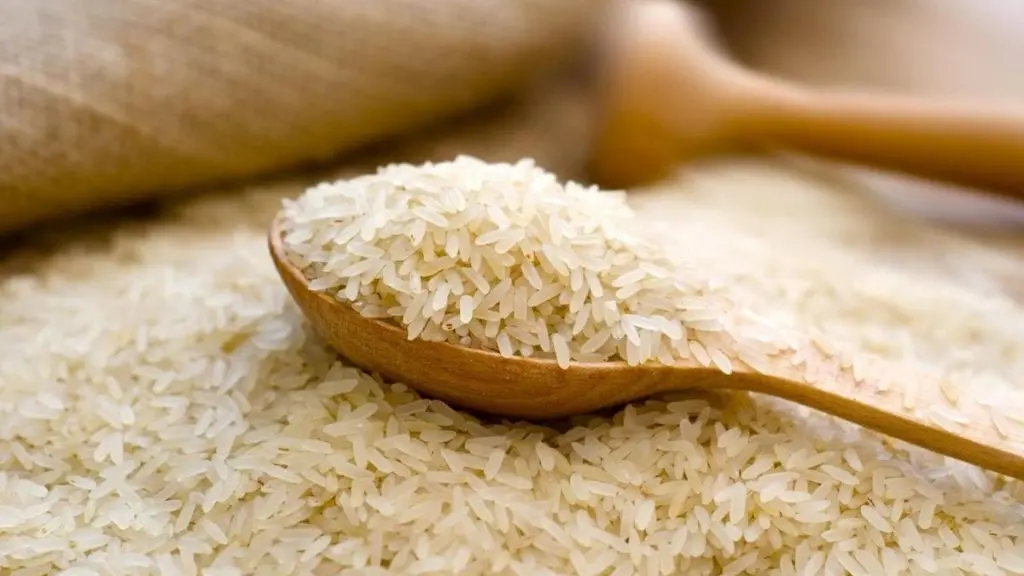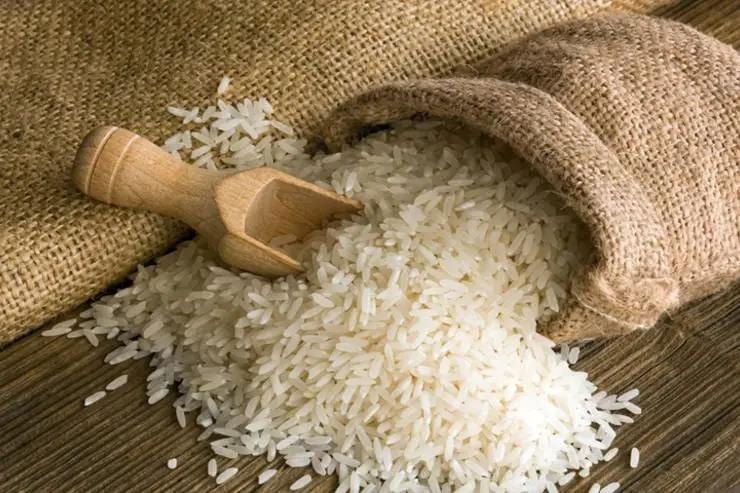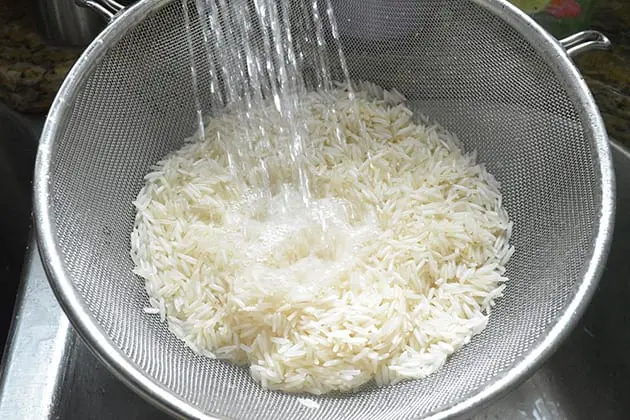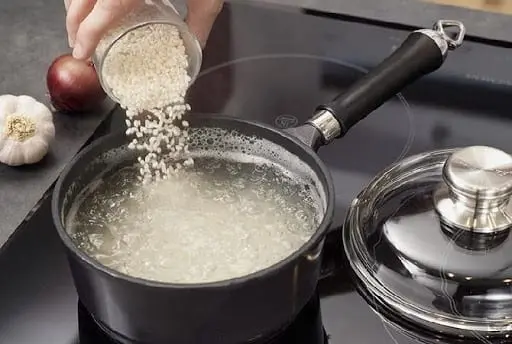Contents
Description
Rice is one of the most popular side dishes in the world. Many people tend to attribute unique dietary properties to rice, considering it a panacea for many illnesses. But the benefits of these grains depend on many factors, and some types may even harm the body.
People have been cultivating rice for 9 thousand years. It appeared in Europe a thousand years ago, and our ancestors called it “Saracen millet.” Everyone has their own favorite dish: milk porridge, pumpkin pudding, crumbly rice with honey, pilaf, etc. And most of these dishes can be found in our great-great-grandmother’s cookbooks. Therefore, talking about rice is about a product that has long been loved and adapted to European culture.
Rice history
No wonder they say that a person has a homeland where he was born and where he is loved. The same can be said for many crops and dishes. For example, the historical homeland of rice is Ancient China. Despite this, more than two-thirds of the world’s population call rice their favorite dish.
The nationwide love for these grains did not come immediately. To win the sympathy of the masses, rice, like other crops, has come a long and long way.
It was famous in China as early as three thousand years BC; from there, it came to India. By the way, it is the Indians that we owe the development of long grain rice. Then, even before our era, rice conquered the entire Asian continent.
It appeared in Europe relatively late. Back rice had the name of Saracen wheat, Saracen grain. It was later that in European languages, it sounded like Riis.
Rice grows in Central and East Africa, Polynesia and Melanesia, and Southern Europe. In Spain and Italy, rice is familiar since the early Middle Ages, in Greece and Albania, Yugoslavia and Bulgaria – also from very distant times. There are plantations in America. Nevertheless, Asia was and remains the main area of rice cultivation.
Over the long history of its development, rice has undergone changes.
More than 20 botanical species are known over 150 varieties, and several thousand agricultural varieties. This variety divides into two main groups: long, thin, narrow cereal of Indian origin and roundish, short rice of Japanese origin.
Rice is white and black, purple, red (by the way, the most nutritious), beige, yellow, streaked. But such cereal is still exotic for our region.
Types of rice

There are three types of rice on our market today: brown, wild or black, unpolished or brown, and regular white. The maximum of nutrients is found in wild black rice.
In second place is unpolished rice; it has a brown color since the grain retains a shell rich in fiber and vitamins.
Cereal of the white color is carefully polished, contains an order of magnitude fewer nutrients than its brown “brother,” and the “average” option is parboiled, which has a light brown tint. It retains the bulk of useful substances. At the same time, its appearance is more attractive and close to white rice.
Composition and calorie content
Rice is a B vitamins source (B1, B2, B3, B6), which is indispensable for the nervous system’s normal activity, so the rice can rightfully be considered food for the Central nervous system. Among the minerals that this cereal is rich in, potassium stands out noticeably; in a small amount, rice grains contain calcium, iodine, iron, zinc, phosphorus.
- Proteins, 5.92 g,
- Fat, 1.53 g,
- Carbohydrates, 56.11
The calorie content of rice is 130 calories / 100 g
The benefits of rice
The benefits of rice are due to its composition, which is made up of complex carbohydrates (up to 80 percent); about 8 percent of rice composition is occupied by protein compounds (eight essential amino acids for the human body). But the most important property of this product is that it does not contain gluten (a vegetable protein that can cause severe allergic reactions).
There is also fiber in these grains, although its share is small – only 3 percent. The vitamin and mineral complex of rice substances is not very wide, but it is most important for health.

The high potassium content of rice speaks of its great role in maintaining the cardiovascular system. Besides, when entering the human body, grain comes into contact with the existing salt and removes its excess. It is no coincidence that the rice diet is famous for removing salts from the joints in older people.
Rice is also beneficial in the presence of kidney and urinary system diseases.
Folk medicine
In folk medicine, rice wort is used for pneumonia, lung diseases, sore throat, flu, and an antipyretic agent.
One of the most beneficial properties of rice is its enveloping effect. Once in the stomach, it gently envelops its walls and minimizes the mucous membrane’s reaction to contact with gastric juice. This property is significant for people with high acidity of gastric juice and those suffering from gastritis or ulcerative lesions of the gastric mucosa.
Another beneficial property of rice is absorbing toxins that enter the body and other foods.
Rice has cleansing properties, restores appetite after prolonged fasting and severe illness, normalizes sleep, enhances lactation in nursing mothers, and even eliminates bad breath.
Due to its beneficial properties, pediatricians recommend rice around the world as the first complementary food for infants. It is possible to introduce porridge into the child’s diet, starting from six months. These grains have properties that are both beneficial and harmful simultaneously; its’ grains contain substances that inhibit intestinal motility. Therefore, rice water is one of the most common medicinal “folk” remedies for diarrhea and chronic diarrhea.

First of all, it must be said about the fixing properties of rice. Those who often suffer from heaviness in the intestines need to be wary of this cereal.
It is also worth remembering that harm and benefits depending on its variety and method of processing: white rice is a refined product, and its frequent use leads to the development of diabetes mellitus, cardiovascular diseases, hypovitaminosis, and excess weight.
Processing the product during transportation in ship’s holds plays a significant role in increasing the harmfulness of rice: it is polished with a mixture of glucose and talc and enriched with synthetic vitamins. Talc gives gloss and external shine, and glucose improves taste. Therefore, to shine the risks of meeting such a product, it is better to choose environmentally friendly brands (including domestic ones).
5 Interesting facts about rice
- Japanese scientists claim that brown cereal increases intelligence and memory.
- In China, the expression “break a bowl of rice” is translated as “quit work.”
- It is the staple food of almost half of the world’s population, and it takes 5,000 liters of water to produce 1 kilogram of irrigated cereal.
- The words “food” and “rice” are identical in several Asian languages, and in Chinese, the concepts of “breakfast,” “lunch,” and “dinner” are translated as “early rice,” “midday,” “late.”
- For a long time in Japan, women have used this cereal and rice to whiten and rejuvenate the skin. Flour, decoctions, and gruel cleanse and whiten the skin from age spots and freckles.
Harm and contraindications

It is important to remember how many calories are in rice. And take into account that this is not a dietary product. Note to all lovers of this cereal: 100 grams of it contains 350 calories. Therefore, eating rice for weight loss is not a good idea.
And if your weight is several times higher than the norm, rice is generally contraindicated.
This cereal combined with meat is very hard on the stomach.
Doctors advise against eating rice for intestinal colic and constipation.
How to cook rice
Preparing

If you want to cook loose rice, rinse it under cold water before cooking. This will remove the starch that is responsible for stickiness. Rinse the rice about five times or more until the water runs clear. The most convenient way to perform this procedure is with a fine sieve.
Some dishes, such as risotto, require glutinous rice to cook. In this case, you should not rinse it. As a last resort, you can limit yourself to one rinse to wash off all excess.
To cook the rice faster, you can soak it for 30-60 minutes. Then the cooking time will be reduced by almost half. However, in this case, it is better to reduce the amount of water used for cooking.
It is generally believed that cooking these grains requires twice as much water. But this is an approximate proportion. It is better to measure the volume of water based on the type:
- long-grain – 1: 1.5–2;
- medium grain – 1: 2–2.5;
- round grain – 1: 2.5–3;
- steamed – 1: 2;
- brown – 1: 2.5–3;
- the wild – 1: 3.5.
Be sure to read the instructions on the packaging. The manufacturer knows exactly what processing the rice has undergone and suggests the optimal amount of water.
Dishes

It is better to cook rice in a saucepan with a thick bottom: its temperature is evenly distributed. You can also cook it in a large skillet. A cauldron is traditionally used for pilaf.
Cooking rules
If you cook rice in a saucepan, bring the salted water to a boil, and then pour the cereal into it. Stir it once to prevent the grains from sticking to the bottom. Then wait until the dish begins to boil, reduce heat to low, and cover the pan with a lid.
Do not lift the lid during cooking. Otherwise, the rice will take longer to cook. If you want the rice to be crumbly, do not stir it (except the first time). Otherwise, the grains will break and release starch.
The average cooking time, depending on the type, is:
- white – 20 minutes;
- parboiled – 30 minutes;
- brown – 40 minutes;
- wild – 40-60 minutes.
When the porridge ready, remove it from heat and stand for 10-15 minutes. If there is water in the finished rice, drain it or cover the pan with a dry towel: it will absorb excess moisture.
How to choose rice
White, black, brown, and even wild – such a variety among cereals is characteristic only of rice. The result of the planned dish directly depends on its shape, length, and color. A correctly chosen variety determines 90% of the success in cooking pilaf, sushi, and, of course, ordinary porridge. If, as a rule, ordinary people do not have any questions about how to cook round-grain cereal, some buyers are still getting used to exotic names like “arborio,” “jasmine,” and “indica.” Understanding the intricacies of rice selection.
Long and even longer
Long grain rice (indica) is suitable for those who advocate versatility. Such grains does not stick together during cooking and turns out to be crumbly. Medium-grain is shorter and wider than long-grain, and during cooking, it absorbs more moisture, so its grains stick together a little, but at the same time, the dish turns out to be more tender soft. This variety is suitable for soups, pilaf, risotto, and paella. The most popular variety among local people is round grain. It contains a large amount of starch, so it is a creamy mass when finished. Round rice is ideal for making sushi, pies, viscous porridge, puddings, casseroles.
Rice can be 2 types, polished and unpolished. Polished rice is a peeled grain. It is no coincidence that fans of a healthy lifestyle are boycotting this type of cereal. In terms of the content of vitamins and microelements, it is inferior to untreated varieties. Unpolished cereal, in which the shell is preserved, is considered a healthy dietary meal. It should be borne in mind that unpolished rice takes twice as long to cook and, even after prolonged heat treatment, will be tougher than other varieties.
For everything its own kind
In total, there are more than 20 main varieties of rice and more than 150 variations. In color, groats are white shades, and in nature; there are also red, purple, yellow, and even black grains. Let’s talk about the most famous varieties.
Basmati. In Hindi, the word “basmati” means “fragrant”. This is an elite rice variety that grows in India and Pakistan. Basmati has a delicate nutty taste, does not stick together during cooking, and turns out to be crumbly. An ideal side dish for most dishes.
Jasmine. This Thai cereal variety has a pleasant aroma reminiscent of jasmine flowers. White rice turns out to be soft, but at the same time, its long grains do not boil over and retain their shape. These groats are well for preparing salads, side dishes, and desserts.
Red. In France, where this cereal grows, it has long been associated with a weed. But in Asia, red grains have a completely different attitude. There, this variety has been valuable since ancient times and is one of the most useful. Red rice does not boil over and takes on a delicate nutty flavor at the end of boiling.
Black Tibetan. Real wild (black) is essentially a bog grass of the cereal family. Its’ homeland is North America, but now wild rice is also popular in other regions. In addition to the standard set of vitamins characteristic of groats, this cereal is especially rich in magnesium and zinc, potassium, and folic acid.
Arborio. Italian medium-grain arborio rice has a special property: during cooking, it acquires a creamy consistency and absorbs the taste and aroma of all the ingredients in the dish.
Camolino. Large and round Egyptian grains are better with vegetable oil, so they acquire a pearl-cream shade. After boiling, the rice retains its softness and stickiness, but the grains do not stick together. Sushi, porridge, and delicate desserts use camolino.
Other types
Spanish. Bomba, Valencia, and Calasparra are excellent varieties. Пкфшты perfectly absorbs liquid and remains crumbly. Spanish rice makes delicious paella and pilaf.
Krasnodar. This round grain cereal is the most northern in the whole world. Krasnodar rice is good for making soups, sushi, puddings, and cereals.
Uzbek for pilaf. Legendary varieties of chungara, devzira, and dastar-saryk are popular for making real Asian pilaf. Thick and heavy grains of cream, brown and reddish color, due to special processing, absorb the maximum amount of moisture and fat, and the dish is crumbly and fragrant.









